[GenAI] L1-P2-3. Scaling laws, Compute-optimal models
Question
model_size / training_configuration / performance 사이의 상관관계는??
-> determine “how big models need to be?”
Scaling laws
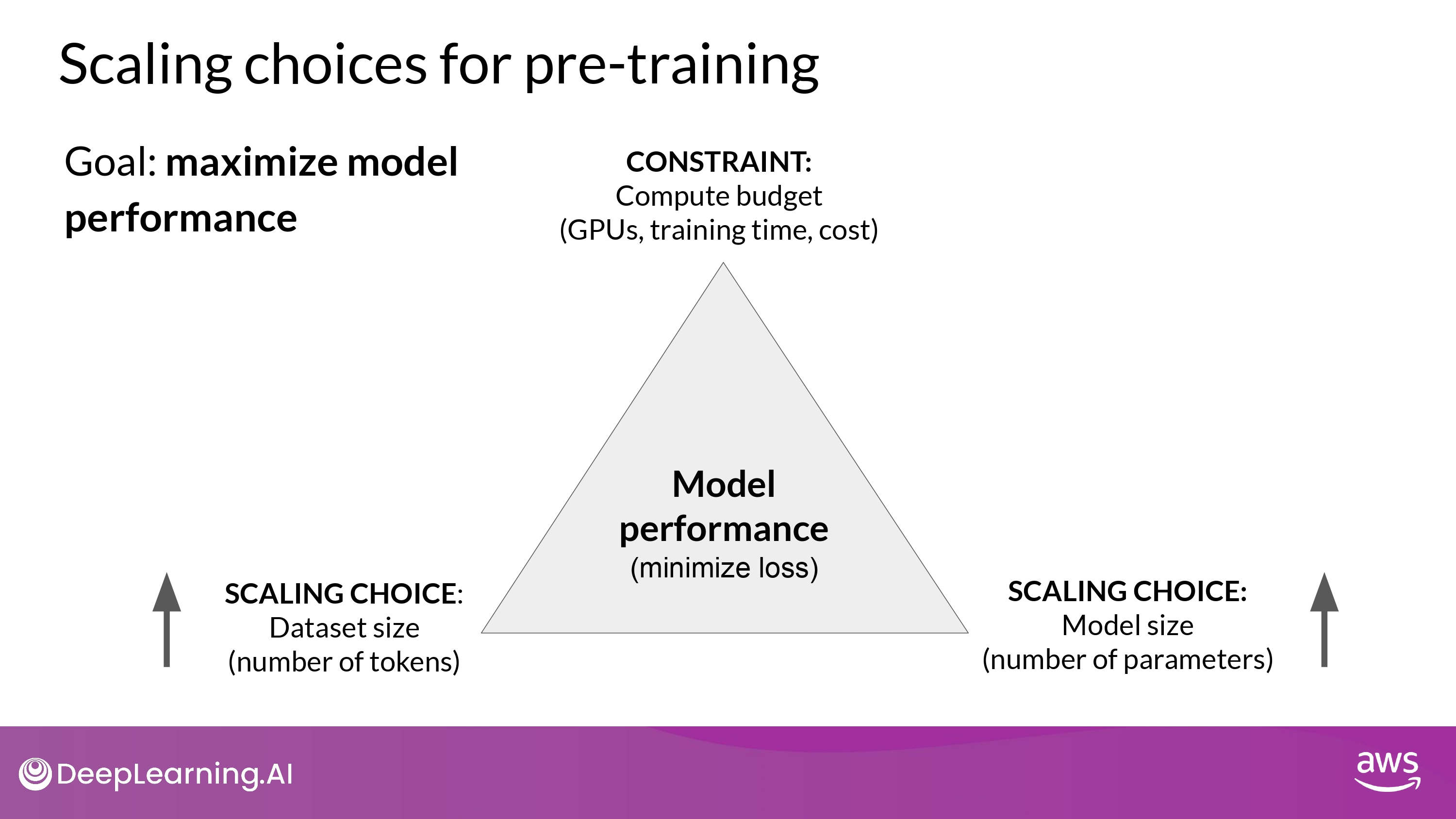
Scaling choices for pre-training
- 이론적으로 Dataset size, Model size를 키우면 Model performance도 증가
- but, 이때 Compute budget을 고려해야 함
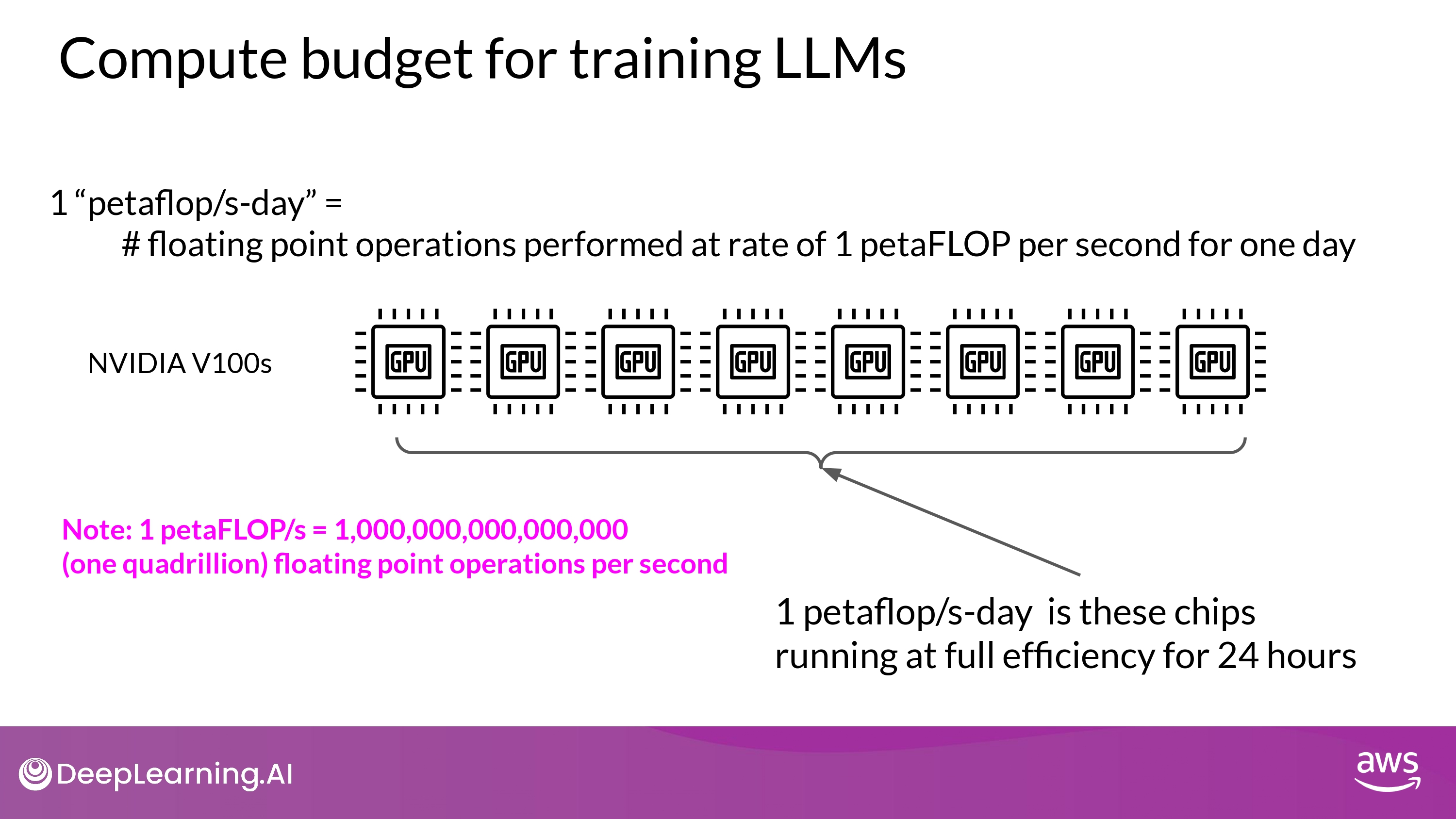

Compute budget for training LLMs
- 단위 : 1 petaflop per second day
- NVIDIA V100 8개 최대 효율로 24시간 사용할 때 연산량
- NVIDIA A100 2개 ~
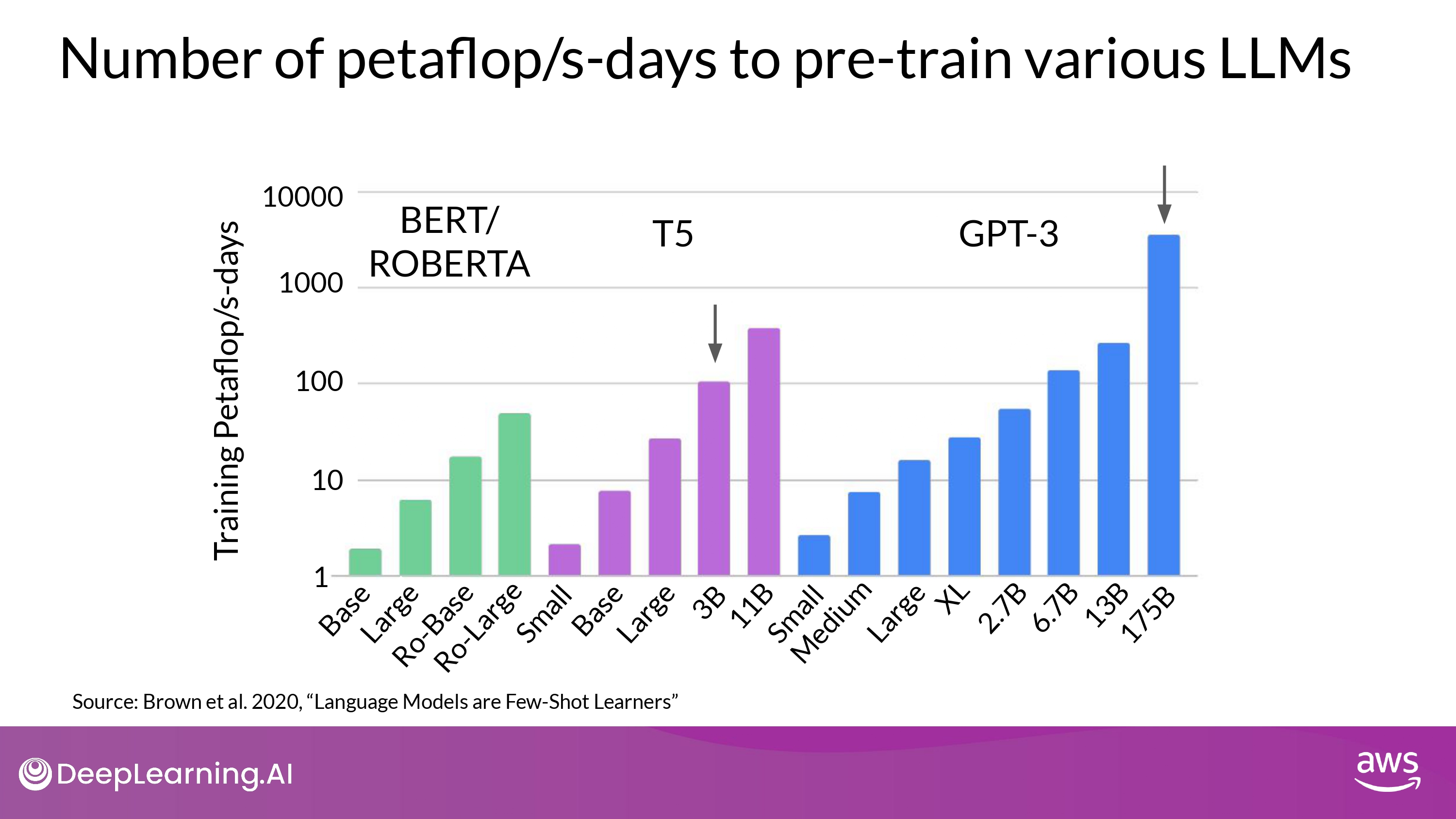
Compute Buget in pre-training various LLMs
- model 종류
- Encoder only
- BERT / ROBERTA
- Encoder-Decoder
- T5
- Decoder only
- GPT-3
- 그래프 해석
- y-axis : logarithmic
- Each increment vertically is a power of 10
- T5 3B : 100 petaflops/s-day
- GPT-3 175B : 3,700 petaflops/s-day
- y-axis : logarithmic

Compute budget vs. model performance
Ideal case
- in OpenAI paper 에서 소개
- 설명
- y-axis : Test Loss
- performance에 대한 proxy 측정 지표
- 낮을 수록 성능 높음
- x-axis : Compute (petaflops/s-day)
- using more compute power
- training for longer
- or BOTH
- y-axis : Test Loss
- 결론
- 지수 증가 관계가 있음을 알 수 있다 (power law relationships)
- x축 y축 모두 logarithmic -> 선형 관계
- 즉, compute budet 늘리면 model performance도 향상 된다
- 지수 증가 관계가 있음을 알 수 있다 (power law relationships)
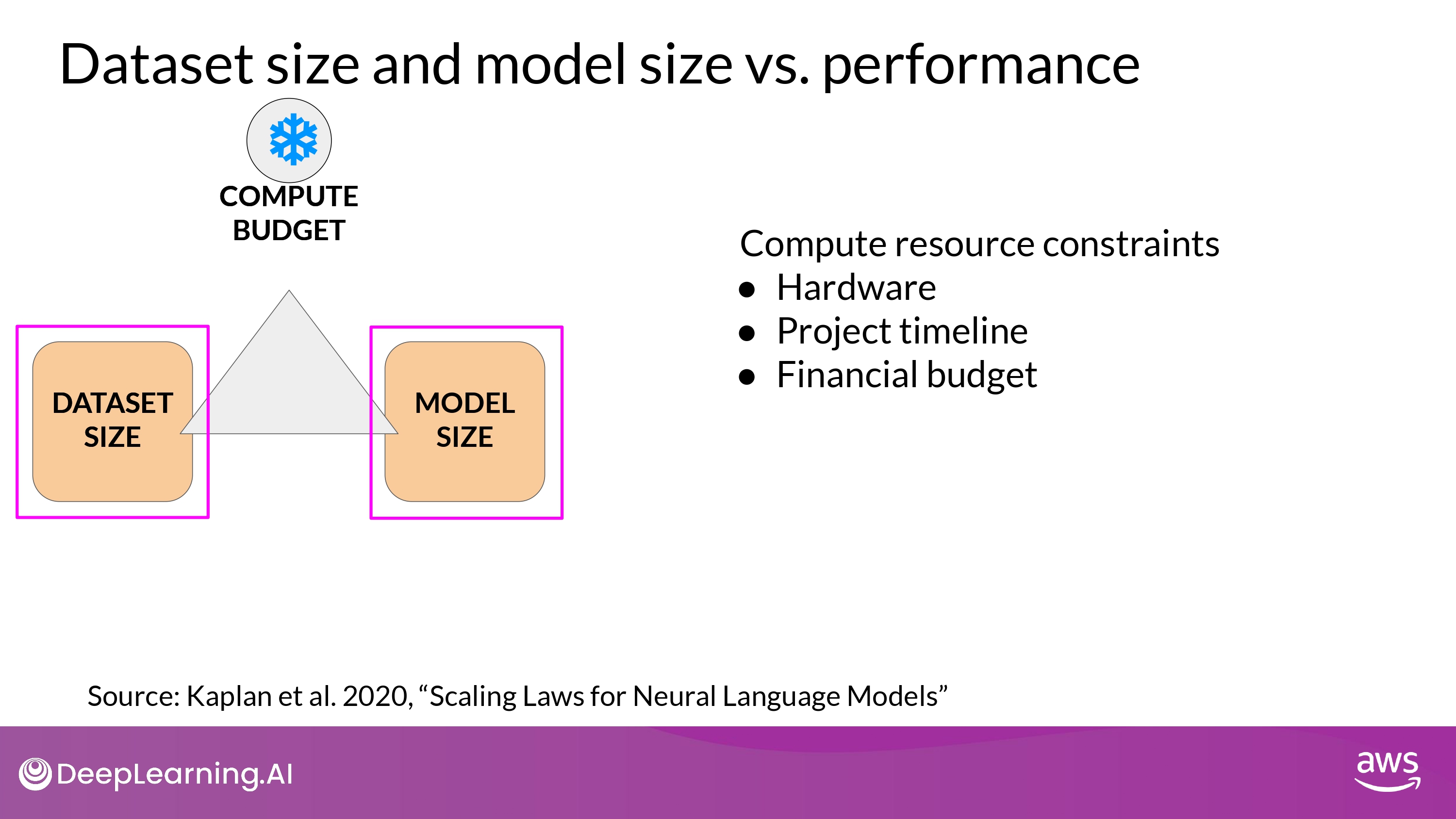
Practical case
- 대부분의 경우 Compute Budget은 상수
- Dataset size 늘리거나
- Model size 키우거나
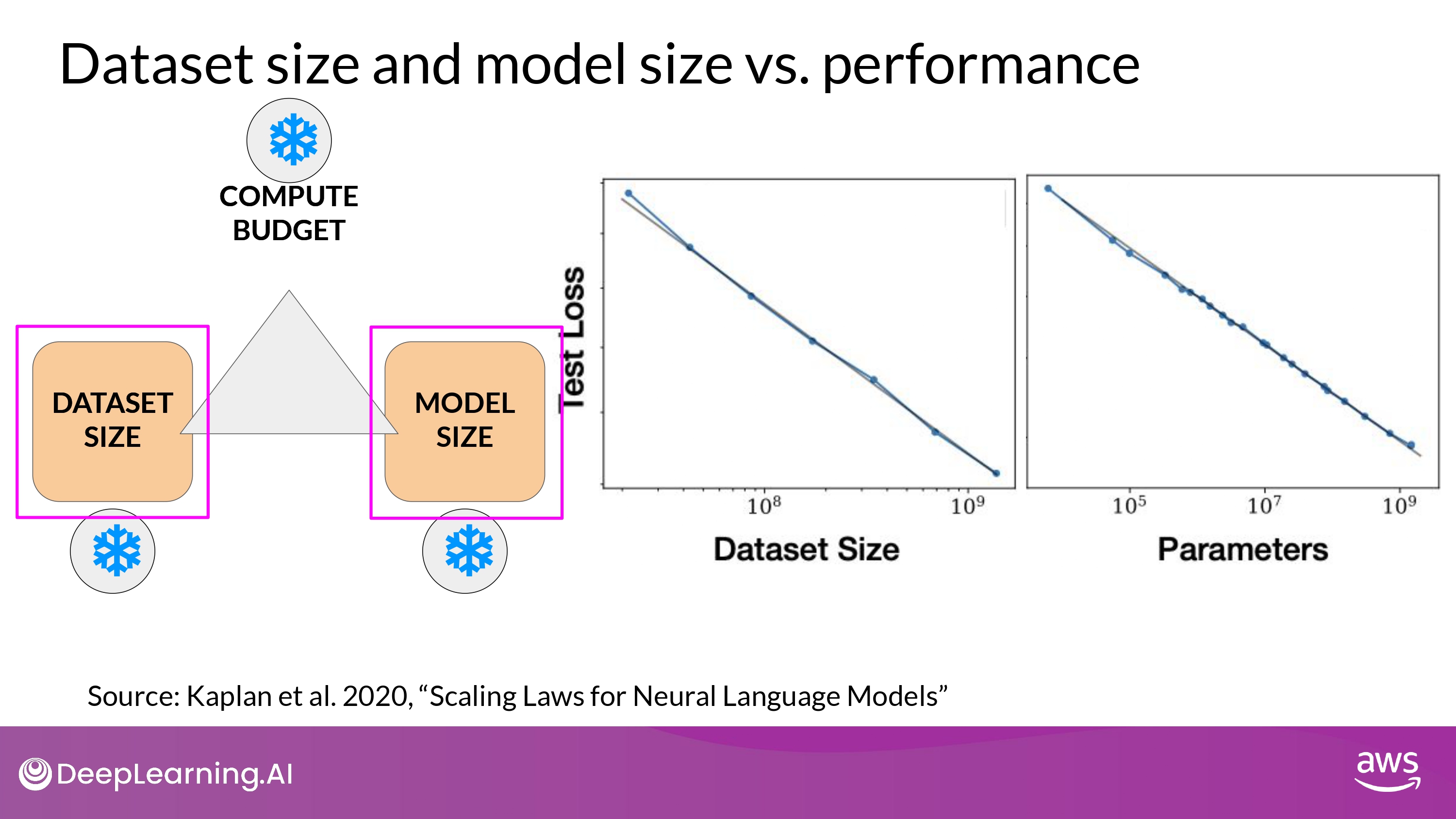
- 결론
- Compute Budget과 동일
- Dataset Size, Model Size -> power laws relationships
- 의문
- 그럼 Dataset Size와 Model Size의 최적의 조합은??
- pre-training compute optimal models??
- 그럼 Dataset Size와 Model Size의 최적의 조합은??
Compute-Optimal LLMs
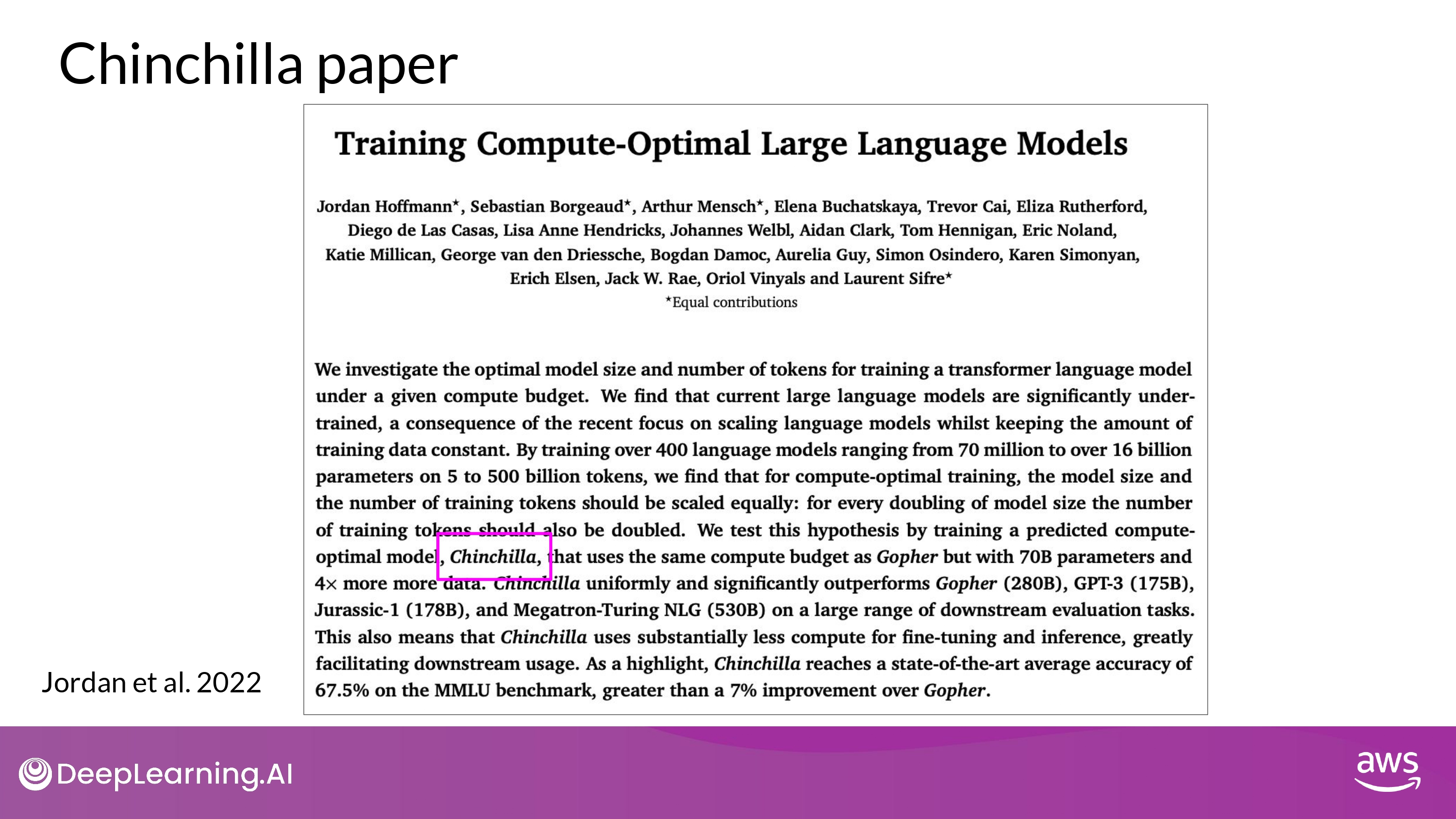
Chinchilla paper
- by DeepMind

Findings
- LLM들은 대부분 'over-parameterized' 되거나 'under-trained' 되어 있다.
- Smaller models may be able to achieve the same performance as much larger ones
- if they are trained on larger datasets.
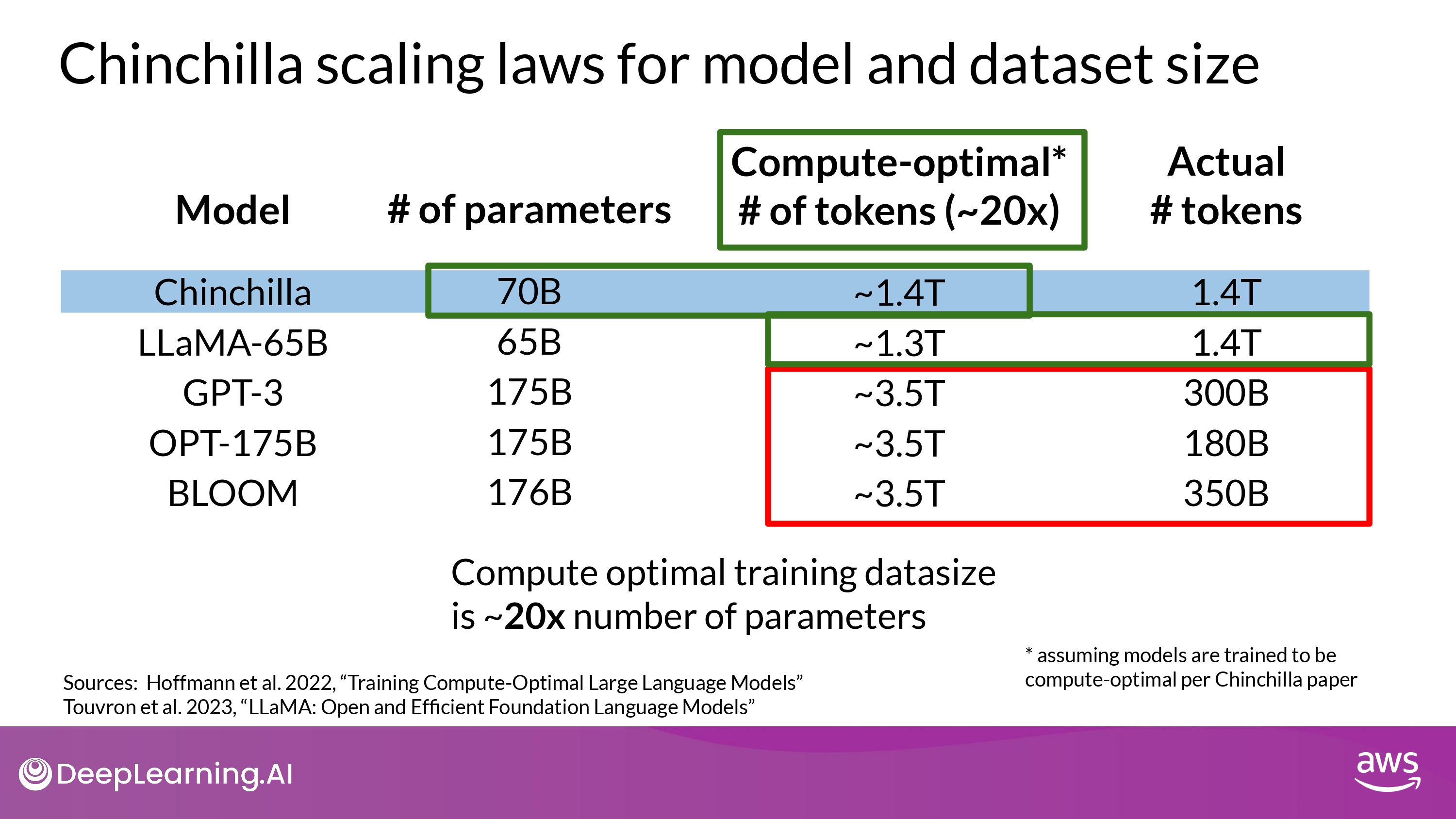
Chinchilla scaling laws
-
파라미터 개수 * 20 = 적정 token 개수 (dataset size)
- 결과 해석
- GPT-3, OPT-175B, BLOOM : under-trained
- LLaMA-65B : optimal
- 중요한 발견
- compute-optimal Chinchilla 모델이 non-compute optimal GPT-3 보다 낫다!
- 많은 범위의 downstream evaluation tasks 에서 좋은 성능 보임
- compute-optimal Chinchilla 모델이 non-compute optimal GPT-3 보다 낫다!
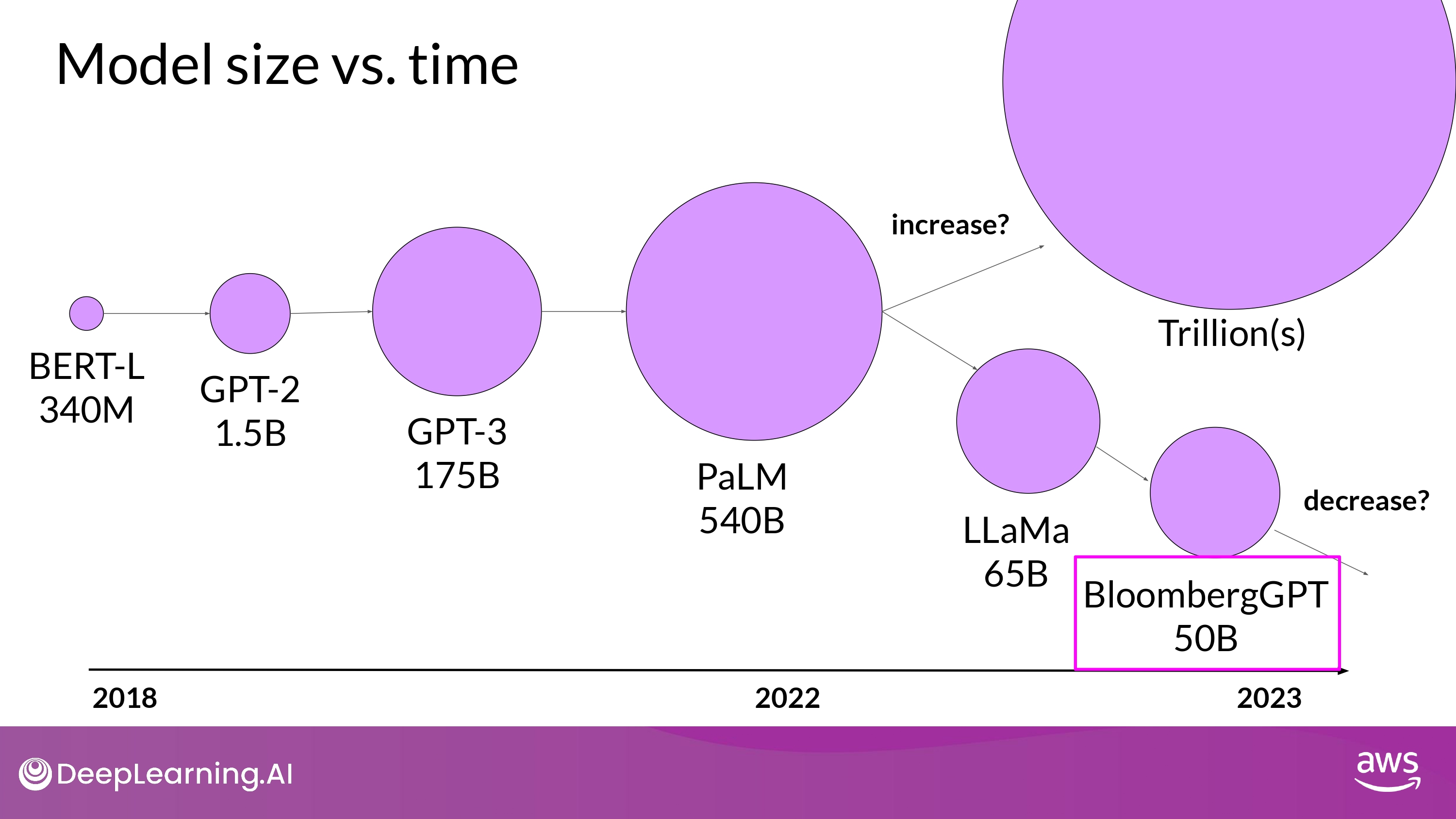
What’s next?
- 앞으로의 행보
- 큰게 더 나을까…?
- GPT-4 ???B
- 최적화 하는게 더 나을까…?
- BloomberGPT 50B
- 큰게 더 나을까…?
Pre-training for domain adaptation
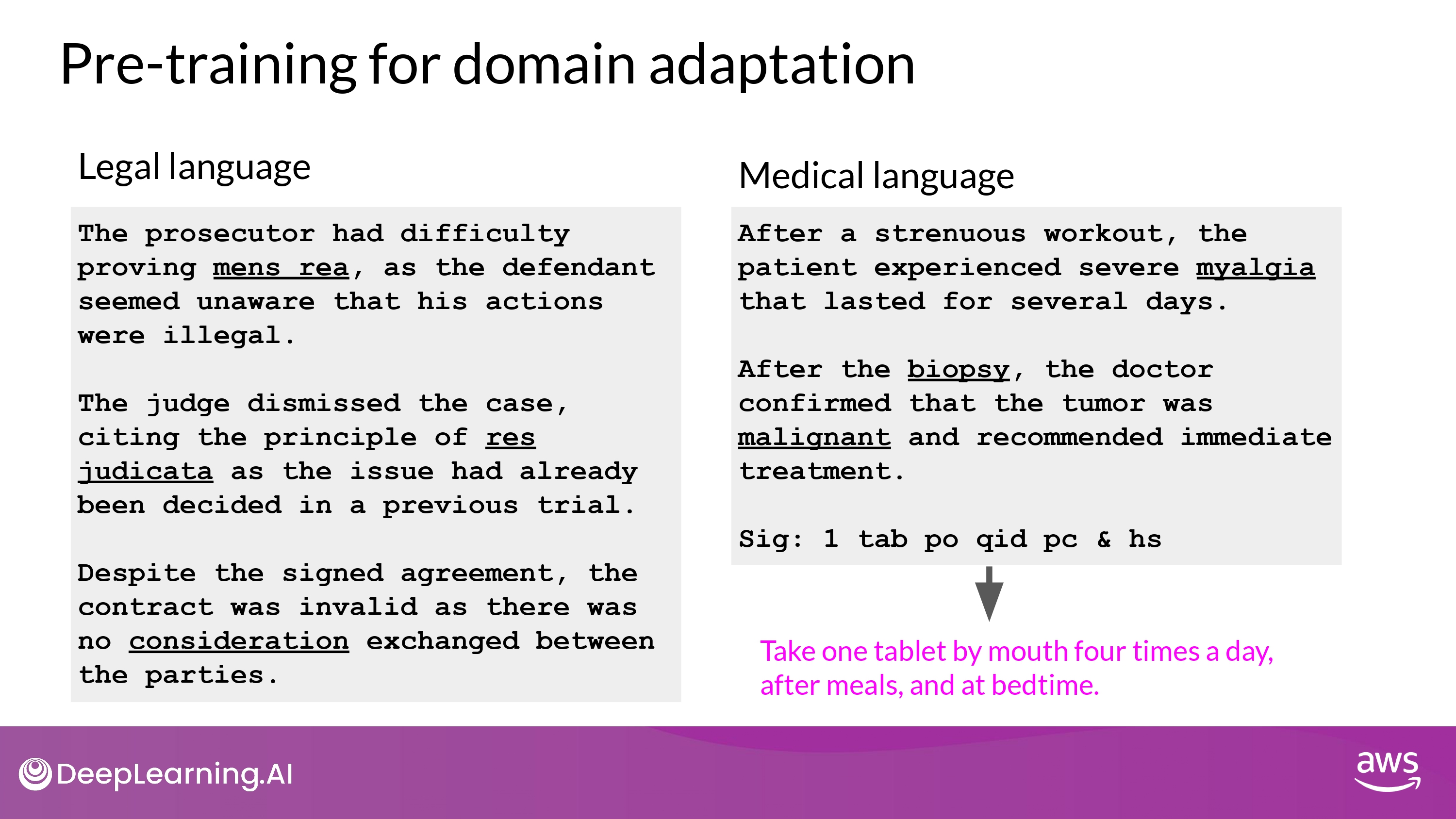
- 일반적으로 pre-training model 사용하는게 유리
- 하지만 바닥부터 pre-training 할 필요도 있음…!
- legal / medical
- Pretraining model from scratch will result in better models for highly specialized domains
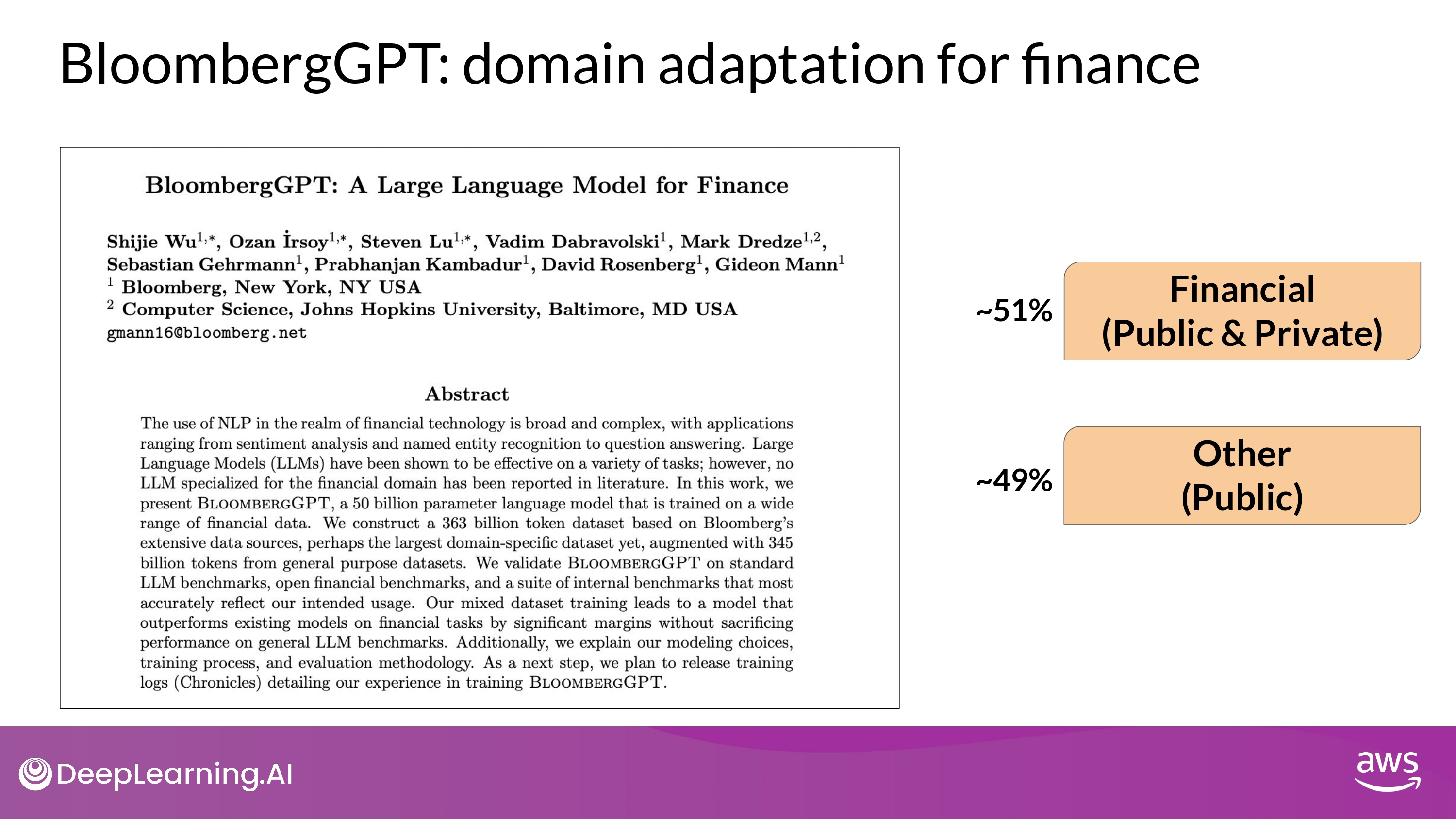
BloombergGPT : domain adaption for finance
- Financial data / Public data 모두 활용
- financial benchmarks 에서 최고의 성능 달성 목표
- 또한, general purpose LLM benchmarkds 에서도 괜찮은 성능 유지 목표
- (maintaining competitive performance)
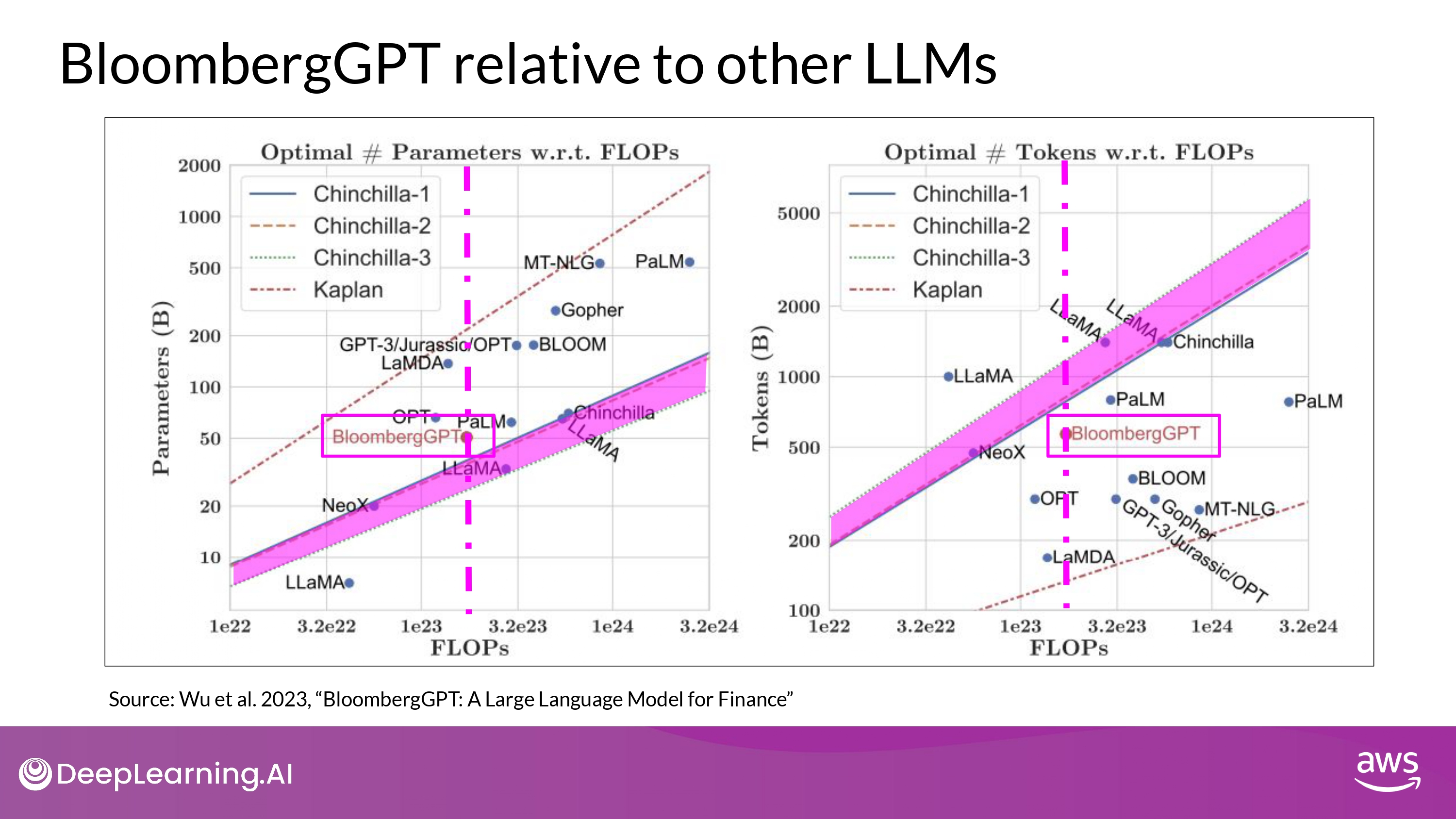
- 그래프 축
- x-axis : FLOPs = Compute Budget
- (left)
- y-axis : optimal model size
- in billions of params
- y-axis : optimal model size
- (right)
- y-axis : optimal training dataset size
- measured in number of tokens
- y-axis : optimal training dataset size
- 그래프 설명
- 점-선 수직 선
- Bloomberg’s Compute Budget
- 색칠 영역
- compute-optimal scaling loss
- Chinchilla paper의 rule 반영
- compute-optimal scaling loss
- 점-선 수직 선
- 결과 해석
- compute-budget (상수)
- 1.3M GPU hours ~= 230,000,000 petaflops
- model parameters = 50B
- Chinchilla approach 반영
- compute-optimal 색칠 영역 근처
- actual number of token = 569B
- Chinchilla value 보다 적은 데이터 학습
- Why? : financial domain data에 대한 제한된 접근성 때문
- 특정 도메인 데이터를 대량으로 구하기 매우 어렵다…!
- compute-budget (상수)
- 의의
- 실제 세계에서의 제약(constraints)은 모델을 pre-training할 때 trade-off 를 일으킬 수 있음을 시사함
(위 본문 내용 및 ppt 사진 자료는 모두 DeepLearning.AI 의 강의자료에서 가져왔으며, 상업적 목적으로 이용할 수 없습니다.)